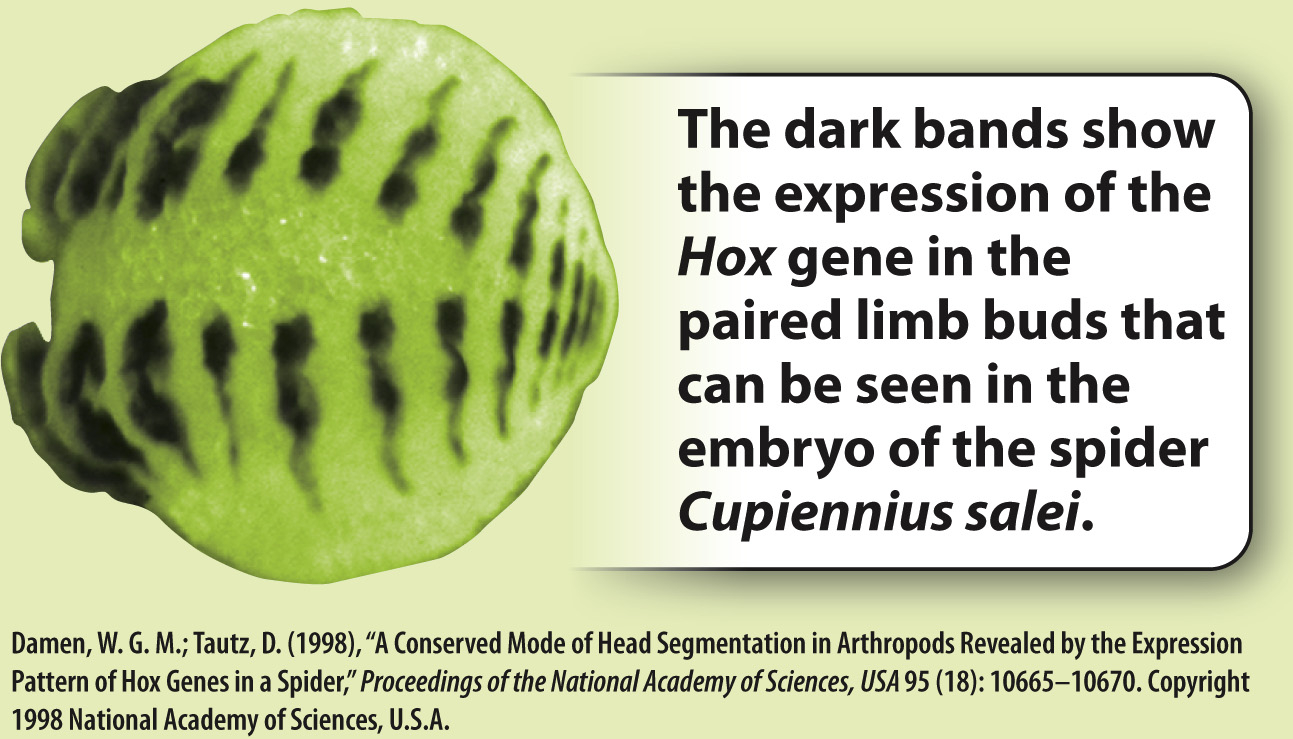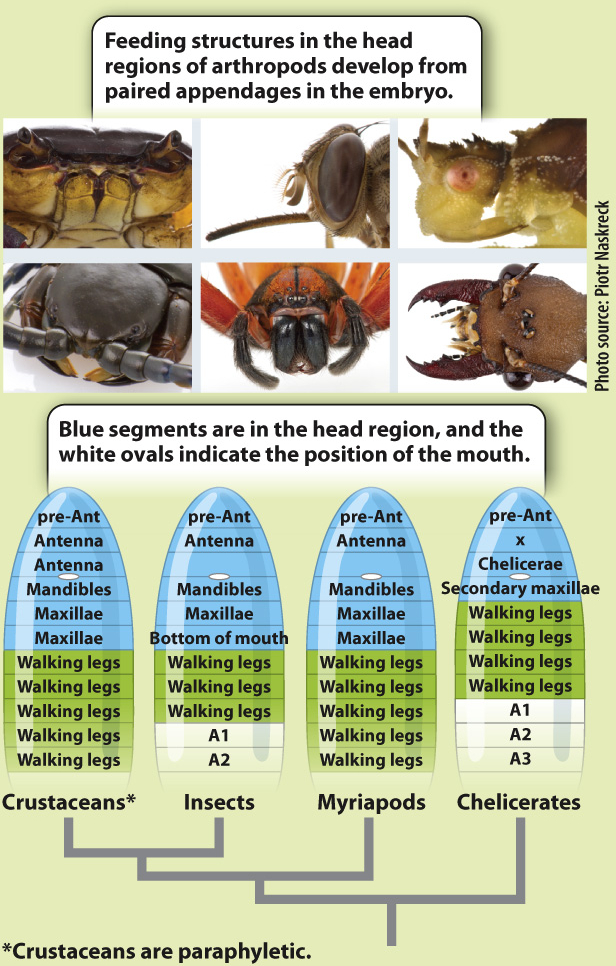HOW DO WE KNOW?
FIG. 44.22
How did the diverse feeding appendages of arthropods arise?
BACKGROUND Arthropod species diversity is matched by diversity of form and function, challenging scientists to recognize and relate the equivalent parts of the very different front ends of, for example, spiders, crabs, and centipedes.
HYPOTHESIS Researchers hypothesized that the diverse front appendages of the different classes of arthropods develop from similar limb buds clearly visible in developing embryos, much as limb buds leading to bird wings, whale flippers, and human arms are present in vertebrate embryos.
EXPERIMENT The early stages of arthropod embryos have a definite head region and several body segments, each with a pair of appendages. Hox genes specify the identity of each body segment (Chapter 20). The expression patterns of different Hox genes can be visualized by means of labeled probes on whole embryos. In this way, the development of appendages on the same segment in different types of arthropod can be compared.

RESULTS Study of the embryos revealed that, for example, the jawlike mandibles of insects and crustaceans form from appendages on the same segments of the developing body, whereas this segment on spiders and scorpions bears a pair of leglike feelers. Behind the mandibles are two pairs of feelers that are represented by legs in spiders and scorpions. On the other hand, the fangs of spiders and their counterparts in scorpions arise from a segment closer to the front end than the mandibles.

CONCLUSIONS The diverse feeding structures of arthropods arise from limb buds in the first segments of the developing embryo. The mandibles of crustaceans and insects arise from the same body segment and indicate the common ancestry of these animals, while spiders, scorpions, and their relatives are more distantly related. Evolution has modified simple legs into the remarkable diversity of forms, enabling structures as specialized as a spider’s fangs and the grinding mandibles of crabs.
FOLLOW-
SOURCE Damen, W. G. M., et al. 1998. “A Conserved Mode of Head Segmentation in Arthropod Revealed by the Expression Pattern of HOX Genes in a Spider.” Proceedings of the National Academy of Sciences USA 95:10665–